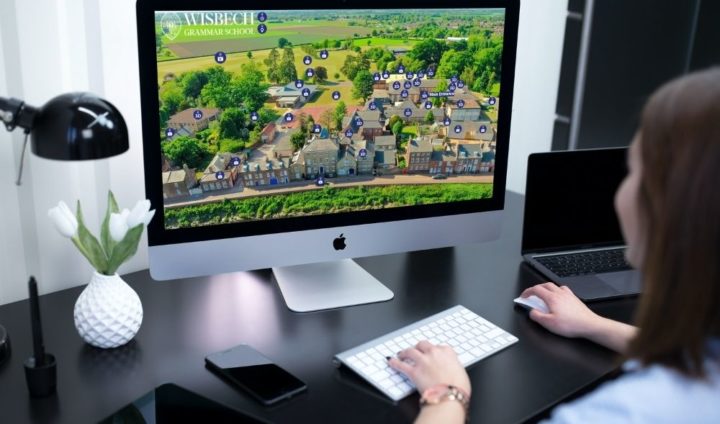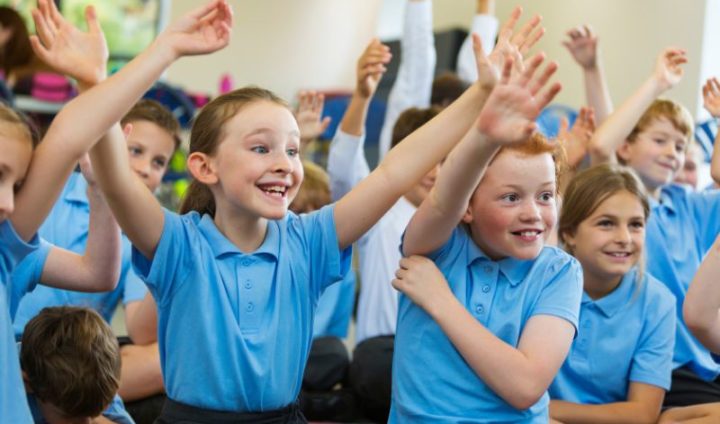There’s no escaping that our reliance on technology in education, and everyday life has grown massively over the last 20 months+. And while our usage ebbs and flows with the changing times, it’s clear that there are some huge benefits to the use of tech in the classroom.
Educational technology, or EdTech, when designed and executed effectively has the ability to increase a child’s uptake of information and comprehension through collaborative learning, problem solving and reward & recognition.
As 2021 comes to a close, we thought we’d take a look at what’s in store for teaching tech in 2022 and beyond…
Immersive learning
We all know how much children enjoy a school trip, and how beneficial they are to their learning. The opportunity to visit places and spaces in person and for students to immerse themselves in their location, really helps to put their learning from their classroom-based lessons into context.

From places of historical or cultural significance to sites of special scientific interest or geographical relevance, Virtual Reality (VR) and Augmented Reality (AR) offer students the opportunity experience these places as if they were there in person.
The transformative potential of VR and AR technologies when integrated into a traditional teaching scenario is huge. Where students might currently read texts and view images or video, they could be transported on a field trip or to a museum or exhibit, without ever leaving the classroom. While this is not only convenient, it offers increased variety in lesson structure and delivery.
In the current climate, with concerns over infection control in particular, as well as taking your school’s carbon footprint into account, VR and AR offer you the opportunity to make some clear wins.
Gamification in education
It’s proven that kids learn best through play. The principles of games – where progress is rewarded by ‘points’ or other currency, added to the ability to advance up the levels to ‘win’, offer obvious rewards for young minds. Convert these principles into learning, and you have the recipe for a hugely successful teaching tool.

Unlike game-based learning, where students make their own games or play commercial video games, gamification simply exploits the elements that make these effective and integrates them into other activities. These might include helping students assimilate new information, testing their knowledge as well as reinforcing behavioural expectations, procedures, rules and social standards through reward and recognition.
The benefits of gamification in the classroom are huge and include the ability for students to own their own learning, explore different identities through avatars or characters, exhibit higher engagement and concentration in their learning and the creation of a more relaxed and fun classroom environment, among others.
Keep it simple
EdTech doesn’t have to be time consuming or intensive. Often, simple tech, consumed in bite-sized sessions, sometimes referred to as ‘nanolearning’ is enough to capture and retain the attention of a class and increase productivity.

The use of familiar platforms such as Snapchat, TikTok, Twitter, YouTube and Instagram can be an ideal means of making educational content more accessible and digestible.
As with any educational tool, bearing the confidence and abilities of individual learners in mind when using any educational technology is vital. Anything too challenging could be off-putting to a student that struggles with confidence or understanding of a subject. The ability to score points and seemingly perform well is always going to be a stronger motivator than negative feelings of failure.
Stay on top of cyber security
With an increase in technology usage in the classroom, it’s essential that schools pay close attention to their cyber security and re-evaluate their service provision with suppliers frequently. In situations where children may need to be home schooled, through lockdowns or self isolation, families should also be reminded of the importance of staying on top of their own online security at home and monitoring their child’s internet usage for potential threats.
The future of technology in tackling the challenges schools face
There’s no denying the potential of technology in tackling the challenges faced by UK independent schools.
The ability to support excellent teaching through reduced teacher workload, allowing them to concentrate more of their time on 1:1 and more personally focussed learning, as well as increasing the efficiency of learning itself are two clear wins.

From the learner’s perspective, improved accessibility and inclusion and the delivery of subject matter in a highly engaging, inspiring and motivating format make for hugely enhanced student outcomes.
And while initial investment in such technologies may be a little daunting at first, the ROI potential is huge. With schools, developers and providers working closely together to drive innovation, schools and students alike are sure to reap the rewards.




